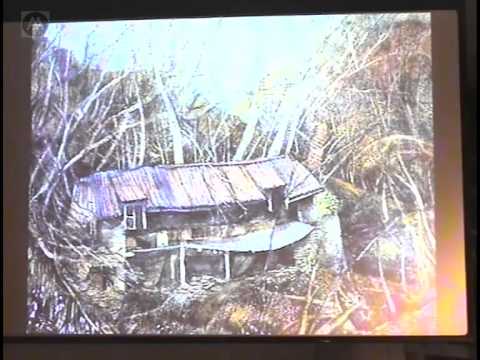
Lecture date: 2004-11-03
Peter Cook on The Happy Volcano: A Description of the Ideal Architecture School Invented by Way of Projects, Anecdotes, Strategies, Family Trees, Kites and Myths.
Peter Cook graduated from the AA in 1960 and taught there from 1964 to 1990. He became Professor of Architecture at the Stadelschule in Frankfurt in 1984 and was Chairman of the Bartlett from 1990 to 2004. He was awarded both the Royal Gold Medal of the RIBA (as member of Archigram) and the RIBA Annie Spink Medal for teaching in 2002.
Transcription:
Mark Cousins welcomes Peter Cook, who begins pointing out his awareness of the significance of the method used in AA:
PETER COOK: I am extremely conscious of the special place that the school has in the history of Architecture Education. The subject cannot be taken lightly, it is certainly quite a fragile tradition, intellectually, because nobody is quite sure (even if they say so) of whether it is a philosophical or intellectual pursuit or it is just craft made modern. There is a memorandum circulating through London saying that Cambridge is about to teach the whole of the school of architecture, not just the diploma course. Not just in the British context, but one is aware of that fragility in a number of places, where funds are used to replace professors, where classes are made larger, where “economies” are made. There are an increasing number of architecture schools which are not even run by architects, or even by people remotely related to architecture. And yet, the business of teaching is in itself a wonderful tradition and architecture schools are extraordinary animals, they have to be treated with sensitivity and intelligence. What I find interesting about the AA is that it is neatly positioned between the cultures of Europe and what I would loosely call the anglo-saxon culture. I am also well aware that this whole business cannot be attacked from a standard scenario, there is no such a thing, even for the boring schools of architecture. I have been part of a number of committees, where what was talked about, endlessly, was the structure of the curriculum and the structure of the responsibilities of the staff, or the research, and in the end it is all bulshit, because a good school is a good school for a number of strange reasons. One also has to remember from the outside, how sensitive the AA feels about itself and its unique form of government.
When students from other schools come to visit the AA (image shown on the screen), they seem sort of satisfied with what they see, in particular if a jury is going on. I recall being in two juries recently, both of them were rather anodyne, as everyone was terribly polite: that it is not what juries should be about. Juries are extremely noisy, or extremely informative or wonderfully played. Hank Smith advocates that History and Theory should have their own studio units, and design has to go to text, Wittkower and Vitruvius have to be known by his students. There is a discussion of drawing by proportion and of considering buildings as concerned with format. There is some heroic-gothic kind of atmospheric revival and there is serious discussion of the role of drawing, of the role of depiction. There are territories alongside or outside which deal with motion, time, content, position, structure, quantity, dynamic, but they are bloody awful drawings by art standards. They have not come out beautifully from the machine or from the hand: but they do the thing more energetic. That kind of conversation seems to return. There are some circumstances cannot be drawn, like the making of ghosts. The role of the studio, the project, the task, of the workshop tradition starts to move in, because the important thing is what you are trying to discover. The AA is an aircraft, positioned conveniently in an American speaking location of Europe (laughs). You get funny people in juries, in proper juries, funny English men who are brilliant and absolutely charismatic. Nonetheless there is a certain recent tradition worked through this romantic English tradition. The AA is in England, but it is insulated from it. And I ask the question: should it be? Or is it about the English tradition of talking about architecture, around architecture. I am a great supporter of it. I introduce Arturo Schneider, who is chilean of German origin, the son of a couple that were both in the school of Valparaiso. They were there in the wonderful days of the open city, that strange construct where the architecture school infiltrated this landscape (shown). Arturo finds himself in London, remembering for instance “The House of Names” in the open city and comparing it to the romantic English ideals. What are these English escapists dreams? The school does not rest and must not rest. Otto con